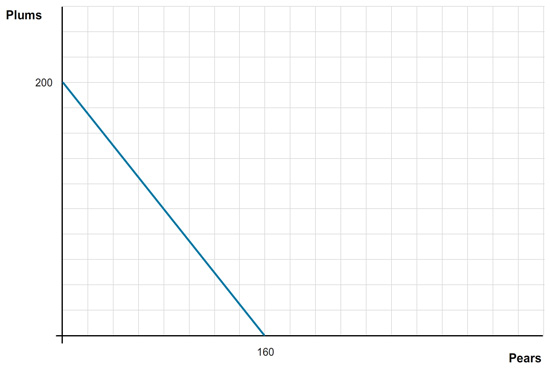Solved Problems
Chapter 6a
TABLE OF CONTENTS
Question 1 of 4
Step 1
Solved Problems
true
true
You must read each slide, and complete any questions on the slide, in sequence.
Consider the following Budget Line. Harriet can choose to buy all plums, all pears, or certain combinations of both.

If Harriet chooses to buy 200 plums, she can also buy pears. (Enter a whole number without decimal places.)
Harriet uses all of her resources on plums. The point (0, 200) represents the place where the budget line meets the y-axis.
3
Step 2

If Harriet wishes to consume 80 pears, she can consume plums.
Here, Harriet spends half her resources on pears. The remaining resources can be spent on plums, allowing Harriet to buy half of the possible amount of plums. This is represented by the point (80, 100).
3
Step 3

The slope of this budget line is .
Slope equals rise/run. Here, the y-value falls by 200 as the x-value increases by 160. In this case, slope = -200/160 = -5/4. The sign is negative.
3
Step 4

What is Harriet’s opportunity cost of one plum?
The easiest way to see this is if Harriet goes from buying all pears to buying all plums, giving up 160 pears to gain 200 plums. Dividing 160 by 200, 0.8 pears = 1 plum.
3